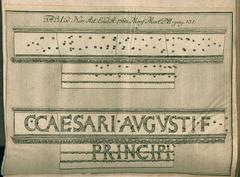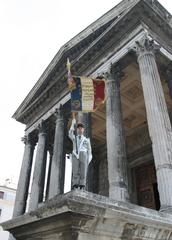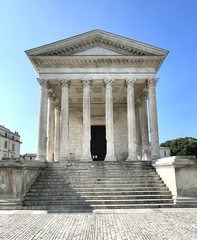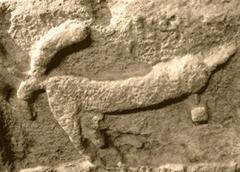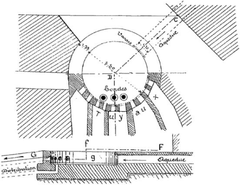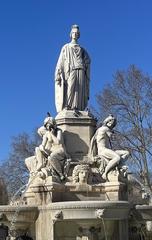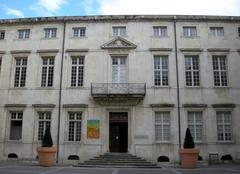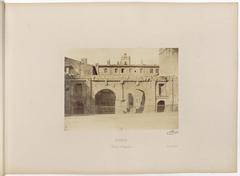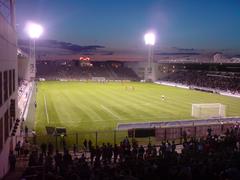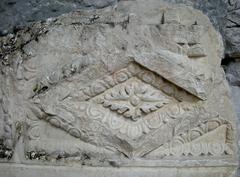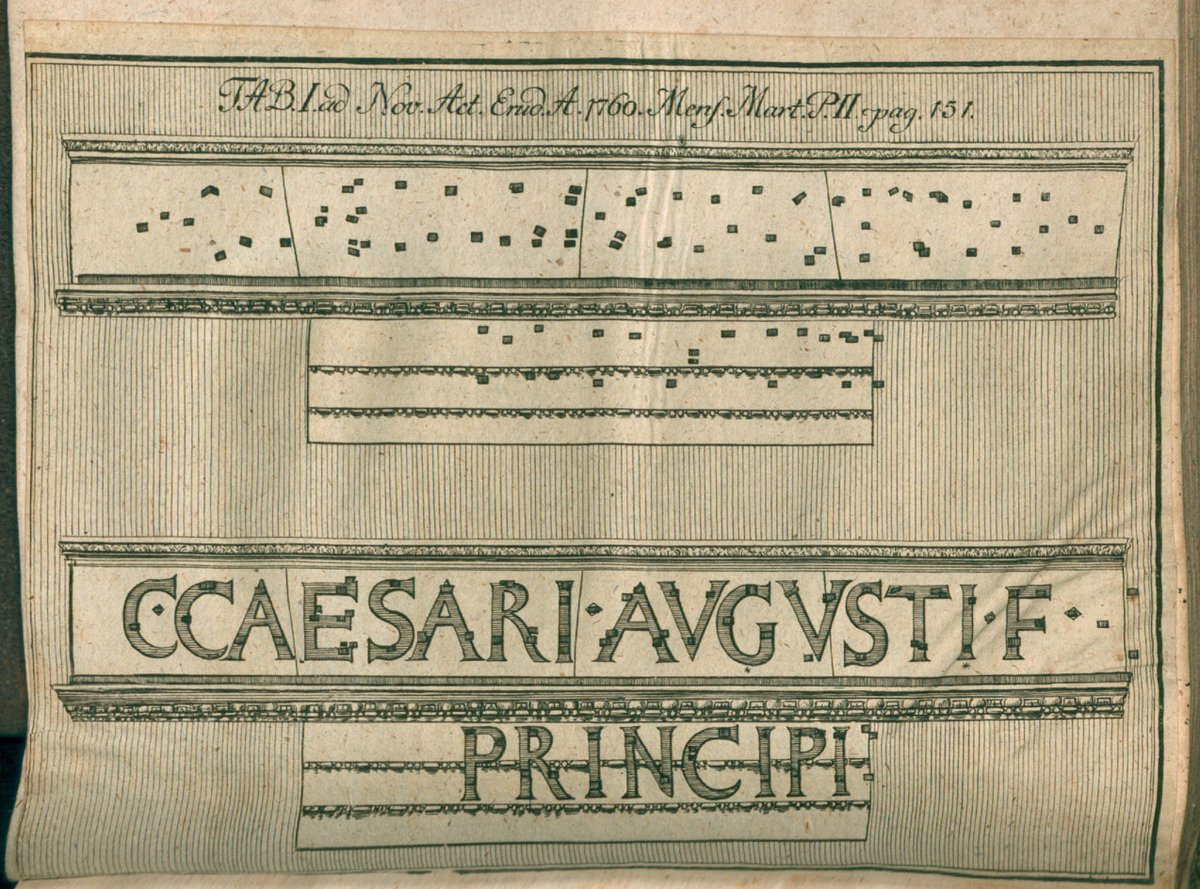
Maison Carrée Nîmes France: Visiting Hours, Tickets, and Historical Sites Guide
Date: 14/06/2025
Introduction
Nestled in the vibrant heart of Nîmes, France, the Maison Carrée stands as one of the world’s best-preserved Roman temples. Constructed under Emperor Augustus between the late 1st century BCE and early 1st century CE, this architectural marvel offers visitors a unique window into ancient Roman religious and civic life. Originally dedicated to Gaius and Lucius Caesar—grandsons and designated heirs of Augustus—the temple symbolizes imperial power and showcases the mastery of Vitruvian architectural principles with its harmonious proportions and ornate Corinthian columns.
Throughout its long history, the Maison Carrée has served multiple purposes, including as a church, private residence, and museum, which has contributed to its remarkable state of preservation. Today, it attracts history enthusiasts and architecture lovers from around the globe, offering modern visitor amenities such as guided tours, accessibility features, and immersive presentations. Its juxtaposition with the contemporary Carré d’Art museum and central placement in Nîmes’ urban landscape reinforces its cultural and historical significance.
This guide provides detailed information on Maison Carrée visiting hours, ticketing, accessibility, architectural highlights, travel tips, and suggestions for exploring nearby Nîmes historical sites (Wikipedia; UNESCO; Smarthistory).
Table of Contents
- Introduction
- Historical Background
- Architectural Features and Innovations
- Post-Roman Transformations
- Restoration and Modern Recognition
- Visitor Information
- Maison Carrée in Nîmes’ Urban Landscape
- Influence on Later Architecture
- Cultural Insights and Local Experience
- Practical Visitor Tips
- FAQ
- Conclusion
- References
Historical Background
Roman Origins and Construction
Maison Carrée, or “Square House,” was erected during the reign of Augustus, primarily between 19 BCE and 12 BCE (Wikipedia). Commissioned by Marcus Vipsanius Agrippa, it was initially dedicated to Augustus’ “genius” and the goddess Roma before being rededicated to Gaius and Lucius Caesar, signifying the temple’s political and dynastic importance (Britannica; Ancient Origins).
Dedication and Political Significance
The dedication to Augustus’ heirs reinforced the legitimacy and continuity of the Julio-Claudian dynasty throughout the Roman provinces. The temple’s inscription, reconstructed in the 18th century, highlights its political symbolism and imperial propaganda (Wikipedia).
Architectural Features and Innovations
Design and Layout
Maison Carrée exemplifies Vitruvian principles, adopting the Corinthian order with a hexastyle (six-column) portico and a pseudoperipteral layout. It measures about 26.42 meters long and 13.54 meters wide, resting on a podium 2.85 meters high (SpottingHistory).
Façade and Portico
The temple’s deep porch is fronted by six free-standing Corinthian columns, each nearly 9 meters tall, supporting an ornate pediment. The use of the Corinthian order, with decorative capitals and fluted shafts, demonstrates Roman adaptation and elaboration of Greek motifs (Smarthistory).
Pseudoperipteral Arrangement
While the temple appears to be surrounded by columns, only the six at the front are free-standing; twenty engaged columns are embedded in the cella’s walls along the sides and rear. This creates the illusion of a fully colonnaded temple while economizing on materials (SpottingHistory).
Decorative Elements
Above the columns, the entablature features the egg-and-dart motif and a frieze adorned with rosettes and acanthus leaves—classical symbols of immortality and regeneration. Dentils and a decorated cornice complete the classical ensemble (SpottingHistory).
Interior Adaptation
The interior, or cella, is windowless and was originally intended to house the cult statue and offerings. Though no ancient decoration survives inside, today it hosts a film presentation on Roman Nîmes. The interior’s simplicity stands in contrast to the ornate exterior (SpottingHistory).
Post-Roman Transformations
Continuous use has ensured Maison Carrée’s preservation. Over time, it has served as a Christian church, Visigothic palace annex, stable, private residence, and museum (Ancient Origins; Waves and Cobblestones).
Restoration and Modern Recognition
Major restoration campaigns in the 19th, 20th, and early 21st centuries have focused on cleaning and repairing the structure, restoring the roof, and removing later additions. In 2023, Maison Carrée was inscribed on the UNESCO World Heritage List for its outstanding universal value (UNESCO; Musée de la Romanité).
Visitor Information
Visiting Hours
Maison Carrée is open year-round, with hours varying by season:
- January–February: 10:00–16:30 (until 18:00 during school holidays)
- March–May: 9:30–18:00
- June: 9:30–19:00
- July–August: 8:00–21:00
- September: 9:30–19:00
- October: 9:30–18:00
- November–December: 10:30–16:30 (until 17:00 during Christmas holidays)
Last admission is 15 minutes before closing. Check the official tourism website for updates.
Tickets and Admission
Admission can be purchased individually or as part of the “Pass Romanité,” which includes entry to other major Roman sites in Nîmes. Tickets are available online (Maison Carrée official site), at the entrance, or through the tourism office. Discounts are available for students, seniors, and families.
Guided Tours and Accessibility
Guided tours and audio guides are available in several languages. The site is wheelchair accessible, with ramps and assistance for visitors with reduced mobility. The cella’s interior is compact but navigable for most visitors.
Location and Getting There
Maison Carrée is centrally situated at Place de la Maison Carrée, within easy walking distance from the Nîmes train station and other city landmarks. The nearest bus stop is “Carré d’Art - Musée.” Parking is available nearby, though public transport is recommended during peak seasons.
Nearby Attractions
While exploring Maison Carrée, consider visiting:
- Arena of Nîmes: Roman amphitheater still hosting events
- Tour Magne: Roman tower with panoramic city views
- Musée de la Romanité: Modern museum with interactive Roman exhibits
- Jardins de la Fontaine: Historic gardens and Roman ruins
- Pont du Gard: UNESCO-listed Roman aqueduct nearby
Maison Carrée in Nîmes’ Urban Landscape
Maison Carrée’s location in the ancient forum underscores its civic and religious importance (Wikipedia). The square was redesigned in 1993 by Norman Foster, who also created the Carré d’Art, a modern art museum and library. This juxtaposition enriches the city’s cultural fabric, creating a dialogue between ancient and contemporary architecture (Nîmes Tourisme).
Influence on Later Architecture
Maison Carrée inspired many neoclassical buildings, including Thomas Jefferson’s Virginia State Capitol and Paris’s Église de la Madeleine (Ancient Origins; History Tools).
Cultural Insights and Local Experience
Festivals and Events
Nîmes hosts the Féria de Nîmes (May and September), featuring music, flamenco, and bullfighting, with Maison Carrée as a picturesque backdrop (Waves and Cobblestones). The Carré d’Art and nearby galleries regularly curate exhibitions, fostering a dialogue between the city’s Roman heritage and its contemporary culture.
Dining and Shopping
The area surrounding Maison Carrée is lively, with cafés, rooftop bars, and restaurants serving Mediterranean cuisine. Local boutiques and markets offer traditional textiles, crafts, and sustainable fashion (France.fr).
Practical Visitor Tips
- Best Time to Visit: Spring and autumn for pleasant weather and fewer crowds.
- Recommended Duration: 1–2 hours for the temple; a two-day stay to explore all major sites.
- Photography: Allowed; flash and tripods may be restricted indoors.
- Accommodation: Choices range from hostels to centrally located hotels.
- Navigation: The city center is pedestrian-friendly, with marked routes connecting major attractions (France.fr).
Frequently Asked Questions (FAQ)
Q: What are the Maison Carrée visiting hours?
A: Hours vary by season; see the official website for updates.
Q: How can I buy tickets?
A: Tickets are available onsite, online, or as part of the “Pass Romanité.”
Q: Is Maison Carrée wheelchair accessible?
A: Yes, with ramps and accessible pathways.
Q: Are guided tours available?
A: Yes, in multiple languages; audio guides are also available.
Q: Can I take photographs inside?
A: Photography is allowed, but flash and tripods may be restricted during presentations.
Enhance Your Visit
- Visuals: Capture photos of the exterior and interior, emphasizing architectural details.
- Map: Use online maps to navigate between Nîmes historical sites.
- Audiala App: Download for audio guides and updated visitor information.
Conclusion
Maison Carrée stands as a testament to Roman architectural brilliance and imperial ideology. Its exceptional preservation and adaptive reuse allow visitors to experience the grandeur of Roman design firsthand. With flexible visiting hours, reasonable ticket options, and comprehensive tours, it is an essential stop for anyone interested in history, architecture, or culture. While in Nîmes, explore the city’s other Roman treasures and immerse yourself in its rich heritage. For the latest updates and guided experiences, download the Audiala app and follow us on social media.
References
- Wikipedia: Maison Carrée
- SpottingHistory Maison Carrée
- UNESCO Maison Carrée Listing
- Musée de la Romanité: Maison Carrée
- Nîmes Tourisme: Maison Carrée
